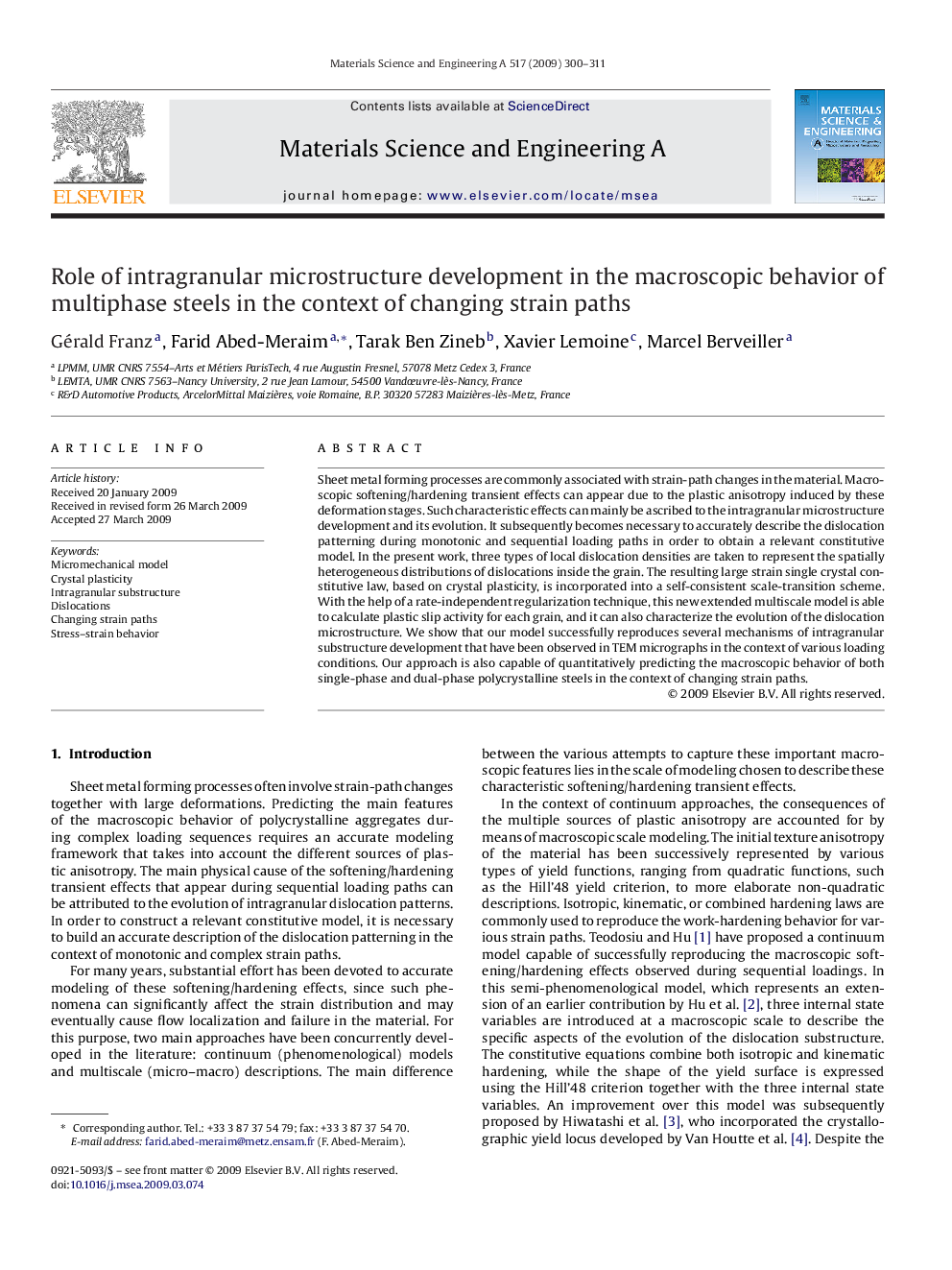| Article ID | Journal | Published Year | Pages | File Type |
|---|---|---|---|---|
| 1580668 | Materials Science and Engineering: A | 2009 | 12 Pages |
Abstract
Sheet metal forming processes are commonly associated with strain-path changes in the material. Macroscopic softening/hardening transient effects can appear due to the plastic anisotropy induced by these deformation stages. Such characteristic effects can mainly be ascribed to the intragranular microstructure development and its evolution. It subsequently becomes necessary to accurately describe the dislocation patterning during monotonic and sequential loading paths in order to obtain a relevant constitutive model. In the present work, three types of local dislocation densities are taken to represent the spatially heterogeneous distributions of dislocations inside the grain. The resulting large strain single crystal constitutive law, based on crystal plasticity, is incorporated into a self-consistent scale-transition scheme. With the help of a rate-independent regularization technique, this new extended multiscale model is able to calculate plastic slip activity for each grain, and it can also characterize the evolution of the dislocation microstructure. We show that our model successfully reproduces several mechanisms of intragranular substructure development that have been observed in TEM micrographs in the context of various loading conditions. Our approach is also capable of quantitatively predicting the macroscopic behavior of both single-phase and dual-phase polycrystalline steels in the context of changing strain paths.
Related Topics
Physical Sciences and Engineering
Materials Science
Materials Science (General)
Authors
Gérald Franz, Farid Abed-Meraim, Tarak Ben Zineb, Xavier Lemoine, Marcel Berveiller,
